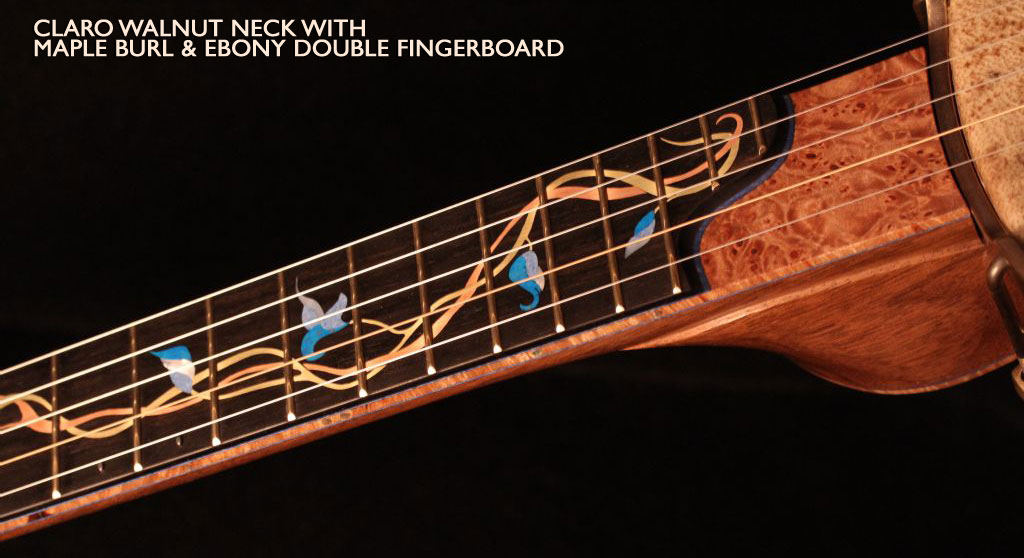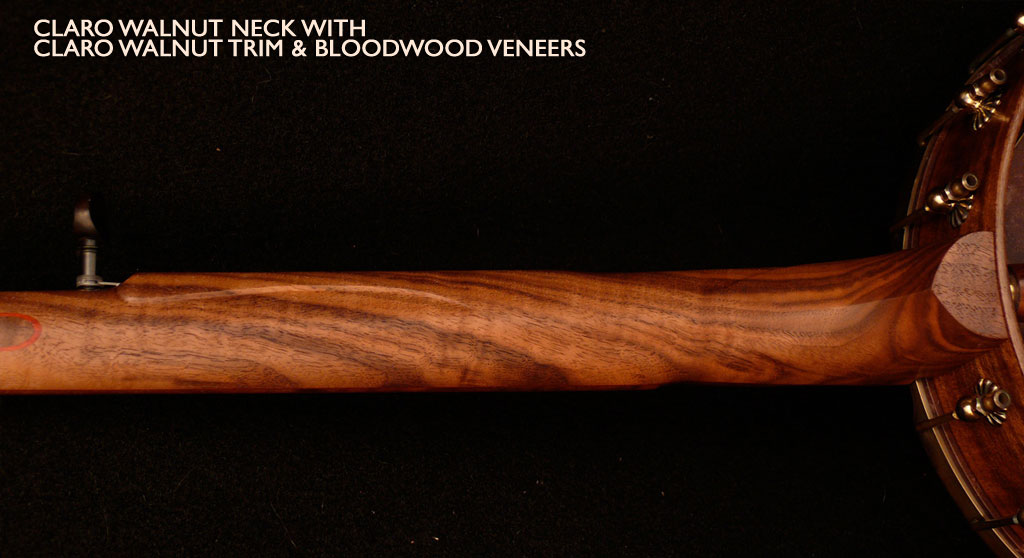Woods
The first step in construction is selecting the wood for each banjo. We use a variety of hardwoods chosen for their tone, beauty and functionality. Only the finest kiln-dried woods are used.
Neck and Rim Woods
These woods make up the majority of the instrument and are chosen for tone and appearance. Woods we commonly use include Claro & black walnut, American cherry, figured & plain maple, and FSC certified Honduran mahogany. We avoid the use of unethically sourced woods. Our necks are carved by hand; rims are turned by hand.
Trim Woods
These woods tend to be denser and harder than the main body woods, and are chosen mostly for function and appearance. Common trim woods we use include ebony, pau ferro, cocobolo, Chechen, Claro walnut, and maple (figured and burled). We always have a stock of interesting trim woods on hand - contact us with your ideas.
Fingerboards
Traditionally, fingerboards are chosen for their density and durability as a playing surface. Darker woods like ebony create contrast with inlayed surfaces. Figured and lighter woods like walnut are also available for fingerboards; this involves impregnating the fingerboard with as much hardening oil as possible before frets are put in.
Peghead, Heel and Rim Overlays
Overlays function as an accent to the main wood of the banjo, while giving strength to its overall construction.
Binding
Binding wood is chosen as an accent and a finishing touch around the rim, neck and sometimes the peghead. See the binding page for some examples of binding.

























